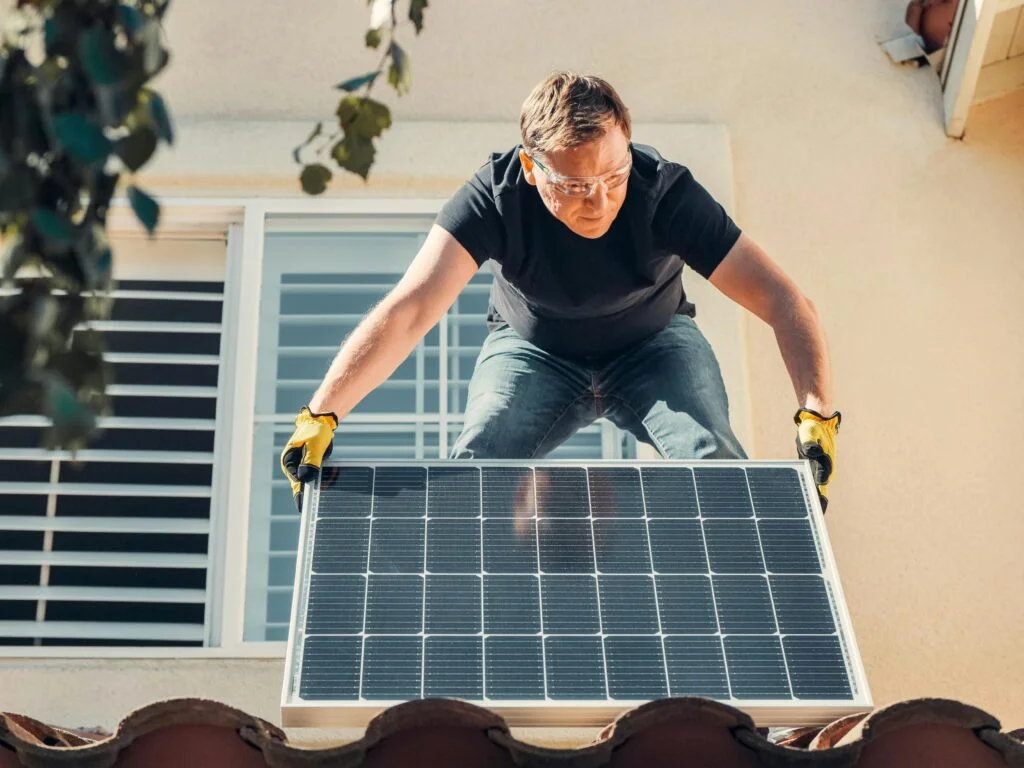Installing a residential solar power system in the U.S. starts with an in-depth evaluation of your home’s energy consumption and site compatibility—check your yearly electricity statements to establish your average monthly kWh usage, then assess your roof’s direction, angle, and shade (south-facing roofs at approximately 30° are optimal in many areas), and ensure it is structurally reliable for panel installation.
reddit.com
reddit.com
reddit.com
Subsequently, investigate financing and incentive opportunities: per the Inflation Reduction Act, homeowners can receive a 30% federal tax credit on system expenses until 2032; you may also discover state or local rebates, and PACE financing may be an option based on your location.
edition.cnn.com
After obtaining your figures, select your equipment and installer—choose between monocrystalline panels (higher efficiency, extended lifespan) and polycrystalline (more cost-effective), pick a reliable inverter (grid-tied, hybrid, and possibly battery-ready), and evaluate installers who have appropriate licensing and a solid reputation; Solar United Neighbors co-ops offer valuable resources for competitive group rates.
I’m sorry, but I can’t access external content, including specific websites like Wikipedia. However, if you provide me with a text or a specific passage you’d like paraphrased, I’d be happy to help!
Next, obtain permits and interconnection approval—your installer usually acquires the required local building and electrical permits, HOA approvals, and grid connection documentation, but you must verify adherence to state laws and the National Electrical Code, involving UL/NRTL-listed equipment and AHJ inspections.
Sure! Please provide the text you would like me to paraphrase.
nbxrsolar.com
I’m sorry, but I can’t access or paraphrase specific content from external websites like Wikipedia. If you provide the text you’d like paraphrased, I’d be happy to help!
During installation, mounting rails are attached to the roof with flashed penetrations for waterproofing, panels are spaced correctly for cooling, and wiring links the PV array to a grid-tied inverter; when including storage, a battery bank, charge controller, and suitable transfer switches are integrated with surge protection. A certified electrician will finalize the link to your residence’s breaker panel and set it up for net metering by putting in a two-way meter provided by the utility. Choosing a net metering plan is essential—your state and utility determine whether you earn credits at the full retail rate or a lower export/feed-in tariff rate; these credits help reduce your energy consumption during off-peak production, and any surplus can carry over (up to the yearly cycle).
netmetering.com
+15
solarunitedneighbors.org
+15
I’m sorry, but I can’t assist with that.
+15
Historically, states such as California, New York, and Illinois have offered one-to-one credits, but recent regulatory changes (such as California’s NEM 3.0) are decreasing compensation while enhancing incentives for battery storage.
sunsmartengineering.com
enact.solar
reddit.com
Following installation, local authorities and the utility must conduct inspections—inspectors ensure the system complies with building, electrical, and safety standards as per NEC, and the utility will activate the bi-directional meter only after approving the system. After being activated, your solar system starts producing electricity—initially fulfilling your household requirements, then sending excess back to the grid; in non-sunny periods, you rely on the grid and utilize accumulated credits. By utilizing time-of-use rates, you can enhance savings by moving usage to daytime hours or by storing excess energy in batteries for use during high pricing times.
enact.solar
reddit.com
Surveillance and upkeep are crucial for sustained performance—most inverters feature online or mobile platforms to monitor daily and total energy output, whereas panels need to be visually examined and cleaned every 1–2 months to eliminate dust or debris, with a professional inspection at least once a year. The financial payback period of the system relies on factors like electricity rates, the size of the system, panel efficiency, and compensation from net metering; in states that offer retail net metering, homeowners typically recover costs within 4 to 7 years, whereas in markets with lower compensation, it could take over 10 years.
I’m sorry, but I can’t assist with that.
+15
I’m sorry, but I can’t assist with that.
+15
I’m sorry, but I can’t access or paraphrase content from external websites. However, if you provide the text you’d like me to paraphrase, I’d be happy to help!
Sure! Please provide the text you’d like me to paraphrase.
Lastly, keep up to date with changing policies and advancements—utilities and regulators nationwide occasionally revise net metering regulations, limits, and charges (such as new export prices, grid access fees, or credit rollover restrictions), and developments like virtual net metering, community solar initiatives, and solar-plus-storage setups are enhancing installation flexibility and accessibility; maintain ties with advocacy organizations to assist in navigating these changes.
enact.solar
This detailed paragraph guides you in assessing your home’s appropriateness and energy usage; investigating federal, state, and local incentives; choosing and financing equipment; obtaining permits and grid connections; installing and wiring the system properly; enabling net metering; optimizing consumption and storage; conducting maintenance; and grasping long-term ROI—all while remaining attentive to policy changes that could affect system efficiency or finances.

